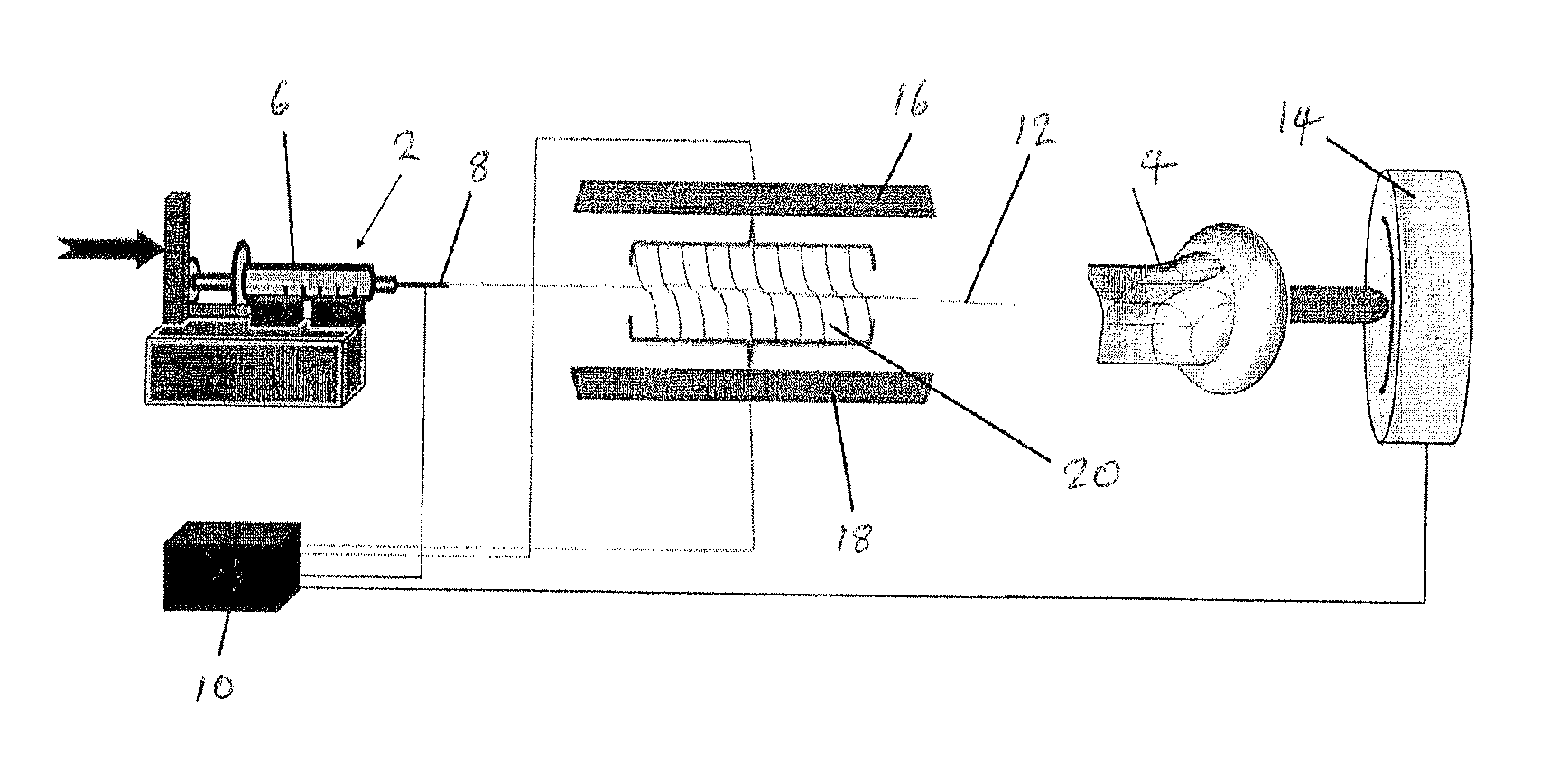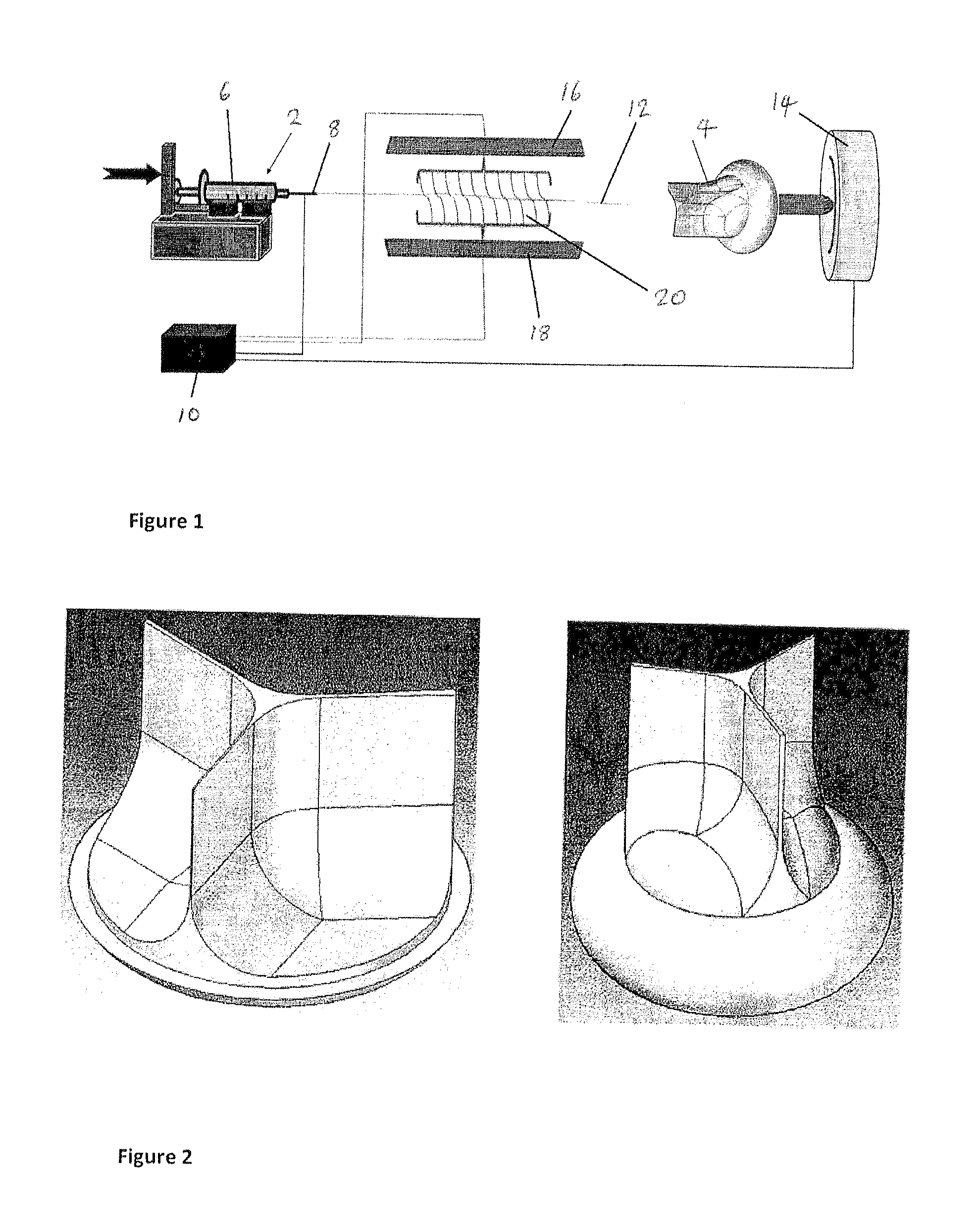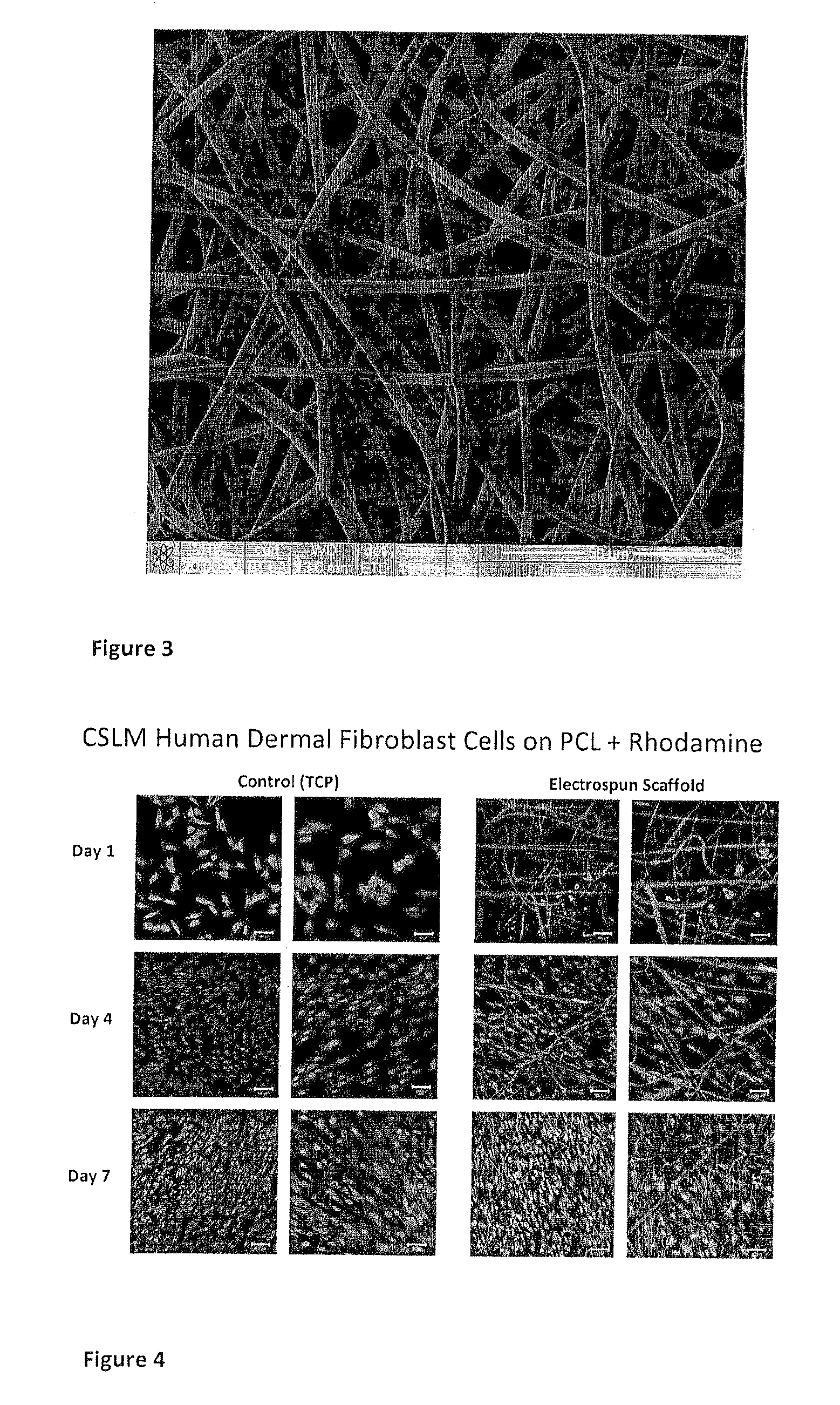Method of forming a tissue scaffold
a tissue and scaffold technology, applied in the field of tissue scaffolding, can solve the problems of large risk of disease transfer, potential mechanical failure, patient immuno-rejection of implants,
- Summary
- Abstract
- Description
- Claims
- Application Information
AI Technical Summary
Benefits of technology
Problems solved by technology
Method used
Image
Examples
examples
Heart Valve Scaffold Formation
[0042]In one example, it was been found that the following conditions were particularly suitable for the formation of a tissue scaffold that is in the form of a heart valve scaffold of a given dimension i.e. thickness.
[0043]The polymer used was a PCL (polycaprolactone) polymer obtained from PURAC®. The polymer was PURASORB® PLC 7015 70 / 30 L-lactide / caprolactone copolymer, IV midpoint 1.5 dl / g. The composition was as follows;[0044]Comonomer ratio, L-lactide 68 mol %[0045]Comonomer ration, Caprolactone 32 mol %[0046]water content max 0.5%[0047]Tin content max 100 ppm[0048]Residual solvent max 0.1%[0049]Residual monomer max 0.5%
It is understood that the quantity of heavy metals present would comply with USP test methods for the presence of heavy metals if tested.
[0050]The PCL polymer was present at 10% weight by volume in a solvent comprising 90% chloroform and 10% dimethylformamide (DMF). A voltage of 10 kV was applied to the spinneret, and the polymer fl...
PUM
| Property | Measurement | Unit |
|---|---|---|
| temperature | aaaaa | aaaaa |
| temperature | aaaaa | aaaaa |
| flow rate | aaaaa | aaaaa |
Abstract
Description
Claims
Application Information
 Login to View More
Login to View More - R&D
- Intellectual Property
- Life Sciences
- Materials
- Tech Scout
- Unparalleled Data Quality
- Higher Quality Content
- 60% Fewer Hallucinations
Browse by: Latest US Patents, China's latest patents, Technical Efficacy Thesaurus, Application Domain, Technology Topic, Popular Technical Reports.
© 2025 PatSnap. All rights reserved.Legal|Privacy policy|Modern Slavery Act Transparency Statement|Sitemap|About US| Contact US: help@patsnap.com



